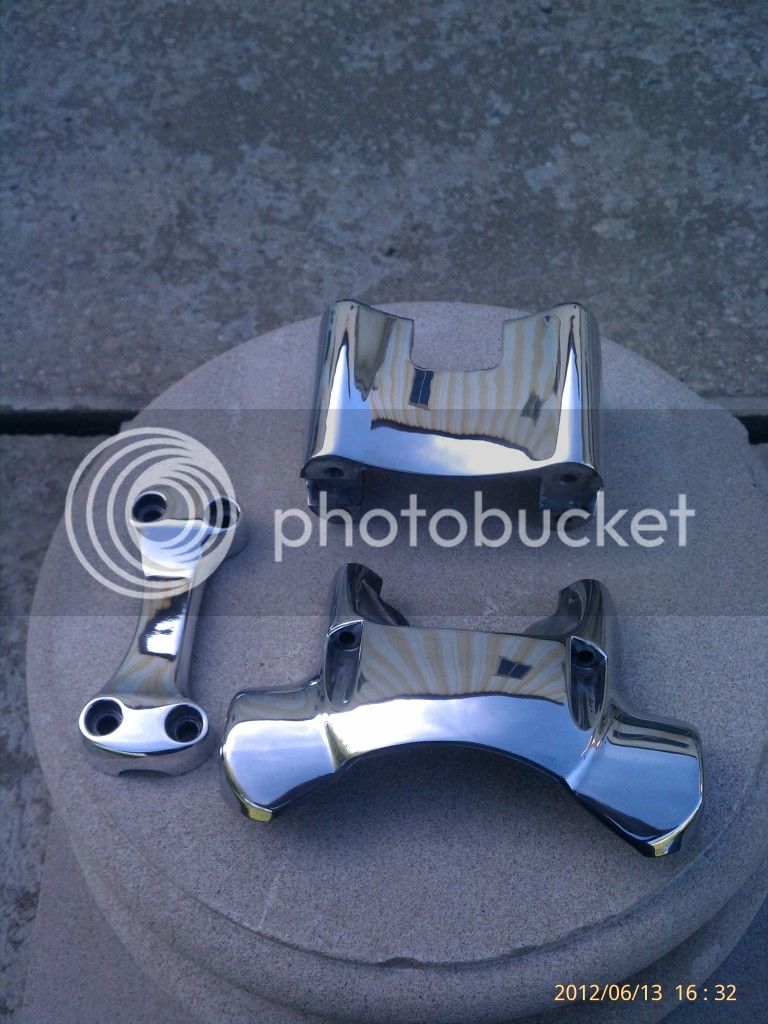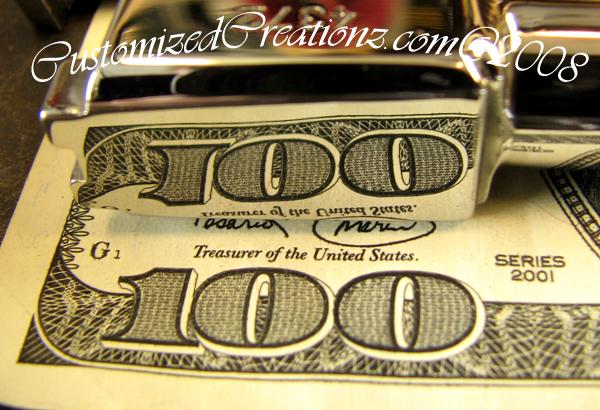One other thing... If you decide to do your scopes, you will get the polishing all done and still have what look like stains in the alum. I talked to several people and they all hade the same result. If someone knows how to get rid of those, let me know- I think it is something in the casting. Scopes are not easy. The have vertical lines in them- no doubt to give the clear coat something to hold on to- It will take a long time to polish these out. I spent 2 days getting rid of those lines, and frankly it wasn't until I went back and tried the Greaseless Compounds. (which is really starting over)
THe stain you are seeing is two things. One too much heat build up in the part. If your not careful you will warp the part possibly changing its form. The heat build up if caught before you actually change the metal structure can be saved. But if you have to use gloves to hold your parts, your getting them WAY to hot. You should wear rubber gloves to keep the crap off your hands, but shouldn't be using anything else. If you get the part too hot and stain it , you will have to sand it down past that mark.
Now streaks of different colors in a part can be materials in the part itself. Porosity holding trapped contaminents etc. Anyways..... getting out some of that stain and getting rid of the white haze you get left over from doing the final part in white only, you need to use blue compounds. Blue is coloring only. It will not buff and really only does a light polishing, but really is removing haze and evening out the color of the shine.
When you dress a wheel you want your part, or something after your compound as you dress it. What your doing here is forcing the compound into the wheel. You will have build up on the part, but it will be hot melted wax and if you go right into buffing with it, you will be fine. You will always have compound being deposited on your parts that you have to wipe off.
Craig I wouldn't use thinner to clean off the parts as you buff. Not sure if that is what your doing, but you will wear out your wheels faster and possibly contaminate your wheels with the thinner.
Use a quench tank to keep your parts cool between buffing cycles or if they start to get to hot, quench them and let them air cool and go on to another part while it cools. Never get them hot enough that you can't hold on to them. That is not good. You will waste compound on your wheels because the hot part will just wipe it off.
There is alot to more to polishing then people realize. Its not just buying a grinder, putting a buffing wheel on it with compound and going to town. Backyard polishing is often that way and while people may be happy with their results, but there is alot more science involved with surface speed, wheel size, directional deflections of the loose and sewn wheels etc. If you just want a shine, strip the clear coat, hit it with white and blue and you can be done in 20 mins. If you want it to look good, it can and probably will take you hours to make it nice.

The riser clamp was a quick polishing job. It shows some lines and deflection in it. The headlight surround and actual riser where sanded and buffed a little better and dont show the lines of deflection. These AREN'T great polished parts, but probably a step above what you will see most backyard or small shops acomplish. There is ALOT of work left to make them how I would normally like them to be. But I didn't want to spend time with them since I was going to powder coat them down the road. I just wanted to clean them up.
Anyways, I think you get the idea of it pretty much.
Any questions let us know.
Todd










![Bike Phone Mount Holder, [Camera Friendly] Motorcycle Phone Mount for Electric Scooter, Mountain, Dirt Bike and Motorcycle - 360° Rotate Suitable for iPhone & Android Smartphones from 4.5-7.0 inches](https://m.media-amazon.com/images/I/51ZirRrsA+L._SL500_.jpg)

![Lamicall Motorcycle Phone Mount Holder - [Dual Vibration Dampener] [720° Adjustment Arm] Motorcycle Cell Phone Holder, Bike Handlebar Phone Mount, for iPhone 16/15/ 14/13 Pro Max, 4.7-6.7" Phones](https://m.media-amazon.com/images/I/41g9IDInCIL._SL500_.jpg)




![Bovemanx Motorcycle Phone Mount Holder, [150mph Wind Anti-Shake][7.2inch Big Phone Friendly] Bike Phone Holder, Motorcycle Handlebar Cell Phone Clamp, Compatible with iPhone 16 Pro Max Smartphones](https://m.media-amazon.com/images/I/51F+1sontPL._SL500_.jpg)


































